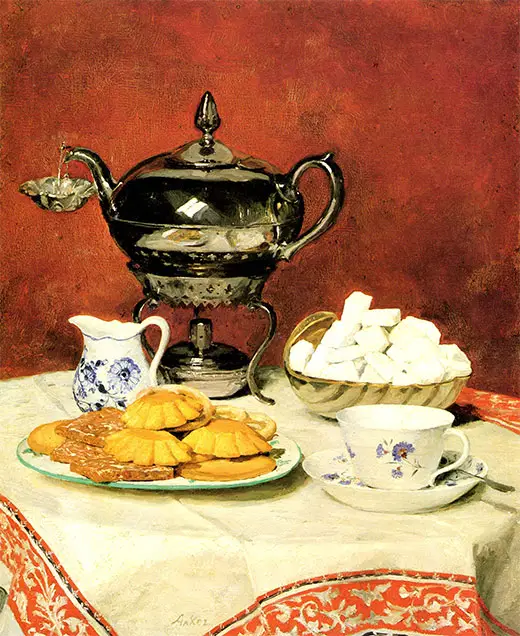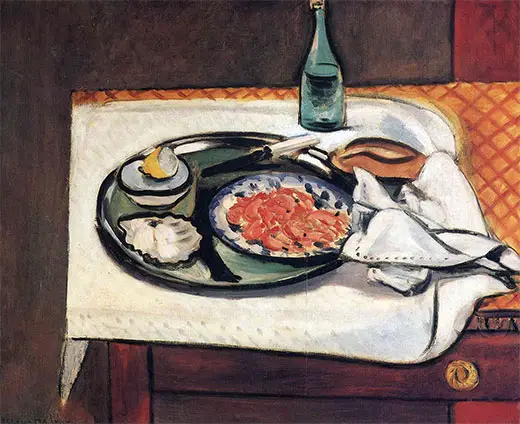A study determined which foods have been featured the most often in famous works of art. Plus conclusions on what it all means.
It’s time for a high-class, sophisticated Monday here on 11Points.com. So don’t go back and read things like 11 Things Calvin Has Never Peed On, But Should or 11 Best Crappy Domestic Beers. Instead, pour a snifter of brandy and summon a harp player come to play you a divine baroque melody while you read.
A new study out of Cornell University analyzed hundreds of famous works of art from the year 1500 to 2000, all of which included food, and determined which foods were most commonly featured throughout art history. Rather than make pithy comments about them in my usual style, instead we can just have a look, pithiness-free, then go into some of the study’s conclusions.
Here are the 11 most popular foods featured in art, along with a representative painting.
11 | Salt
 Still Life with Salt Tub by Pieter Claesz (1644)
Still Life with Salt Tub by Pieter Claesz (1644)
10 | Cheese
 Cheese Head by Roy Lichtenstein (1978)
Cheese Head by Roy Lichtenstein (1978)
9 | Pears
 Napkin, Knife and Pears by Georges Braque (1908)
Napkin, Knife and Pears by Georges Braque (1908)
8 | Pastries
 Still-Life With Tea, Sugar and Enamel Bread by Albert Samuel Anker (1896)
Still-Life With Tea, Sugar and Enamel Bread by Albert Samuel Anker (1896)
7 | Oranges
 Still Life With Lemon and Oranges by Pablo Picasso (1936)
Still Life With Lemon and Oranges by Pablo Picasso (1936)
6 | Shellfish
 Still Life With Shellfish by Henri Matisse (1920)
Still Life With Shellfish by Henri Matisse (1920)
5 | Nuts
 Still Life With Roasted Chestnuts on a White Plate Resting on a Stone Ledge by Giacomo Ceruti (early 1700s)
Still Life With Roasted Chestnuts on a White Plate Resting on a Stone Ledge by Giacomo Ceruti (early 1700s)
4 | Grapes
 Still Life with Grapes, Apples, Pears and Lemons by Vincent van Gogh (1887)
Still Life with Grapes, Apples, Pears and Lemons by Vincent van Gogh (1887)
3 | Apples
 The Son of Man by Rene Magritte (1946)
The Son of Man by Rene Magritte (1946)
2 | Lemons
 Still Life in Blue With Lemon by Paul Cezanne (1877)
Still Life in Blue With Lemon by Paul Cezanne (1877)
1 | Bread
 The Last Supper by Leonardo da Vinci (1498)
The Last Supper by Leonardo da Vinci (1498)
Unleavened bread is still bread, right?
—
And now, here are the takeaway results of the study…
1 | Fruit is by far the most popular type of food
Thanks a lot, Cezanne. Fruit is featured in more than 75 percent of the paintings with food. Grains are in more than half. Meats make it into around 38 percent; dairy in 21 percent; and vegetables in 19 percent. And I assume Campbell’s soup is in one.
2 | The foods featured were generally more aspirational than representative
It seems most artists painted foods that were worldly indulgences for the time and place (which makes sense, considering how many paintings were commissioned by rich people) rather than dietary staples. Like, Germany barely has any access to water, but its paintings in the 17th century were filled with seafood. The Dutch had to import “exotic” lemons, so their paintings were filled with them.
3 | One in four American paintings in the study featured raisins
There aren’t any aspirational foods in this country except “more of everything.” The foods that were more often depicted in American art than the art of any other country are: raisins, almonds, pickles, crackers, black pepper and mustard. Our palate, it is… not the most sophisticated.
4 | Sugar became increasingly popular over the 500 years
There, art reflects life.
—
This has been your mild dose of culture for the day. Resume regularly scheduled activities.